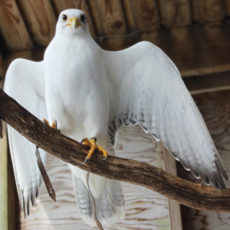Announcements
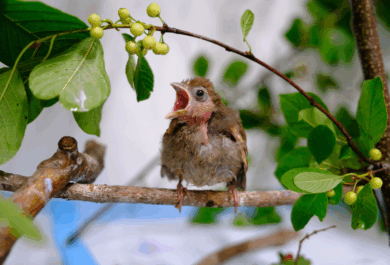

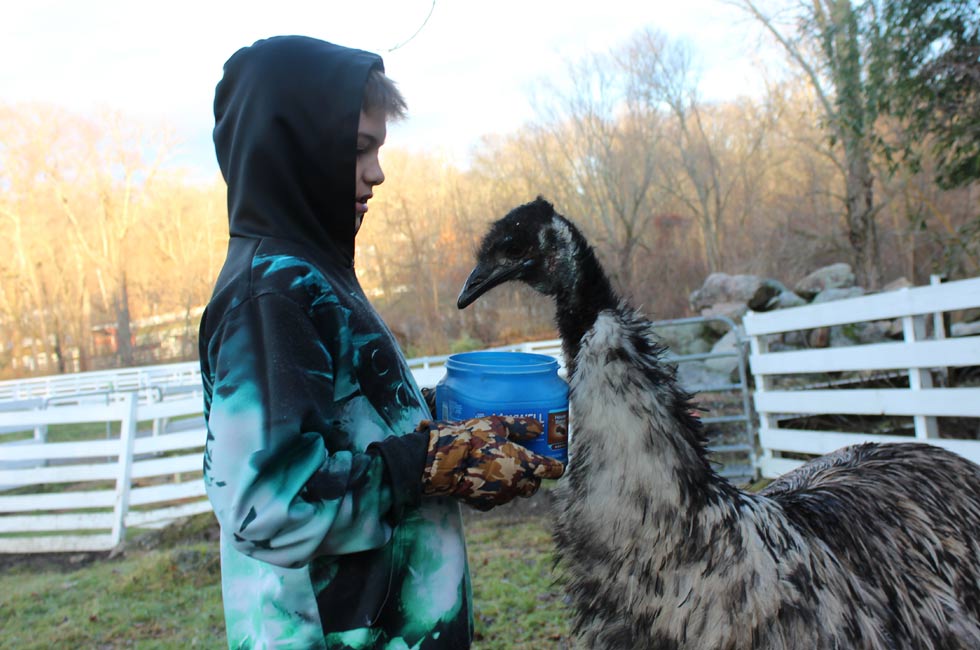
Student Alex feeds the emus most Thursday mornings before school starts as part of his weekly care tasks at the Wildlife Center.
When thinking of the role of the farm at Green Chimneys, images of children riding horses, petting sheep, or visiting goats may easily come to mind. But the nature-based experiences are, in truth, quite expansive. Incorporated into therapeutic education, clinical sessions, and recreation, children with special needs interact with nature and animals in a wide range of ways at Green Chimneys School.
Our Wildlife Center is home to over 50 permanently injured or unreleasable animals. Most known for the birds of prey, a variety of waterfowl, a pair of turkeys, peacocks, and even a porcupine are also under the care of Green Chimneys animal experts. In class and through one-on-one sessions called Learn & Earns, students are learning from wildlife. One of the lessons students are first taught about wildlife is that they are not to be pet. And despite the excitement and thrill of the owls, crows, and raptors, students practice self-regulation skills and respect for boundaries.
When students spend time at the Wildlife Center, they really begin to understand why not all animals can be or should be pet. “When it comes to wildlife, kids need to learn from a distance,” explains Wildlife Caretaker Dave Spillo. “Enrichment allows kids to get involved while they learn.” As a licensed wildlife rehabilitator, Dave’s knowledge and experience in wildlife care are a resource at the center.
Animal enrichment and well-being is a part of Green Chimneys’ approach to caring for the 300+ animals that live on our Brewster and Clearpool campuses (read more about it here). Enrichment is essential to the care of rehabilitated wildlife that cannot return to the wild. In knowing the profile of each animal, including their expected behaviors and social tendencies as well as diets, the staff is better equipped to provide excellent care. Many agile and intelligent wild species, such as crows, ravens, and active mammals can easily get bored in captive settings. Without constant stimulation and the many daily challenges they master in the wild, their senses can be dulled. They can become bored or obese and sometimes exhibit unhealthy behaviors such as pacing or even self-harm. Enrichment activities aim to counterbalance this risk. The key is to understand each species and the types of enrichment that might simulate tasks and activities they would ordinarily do in their natural habitat.
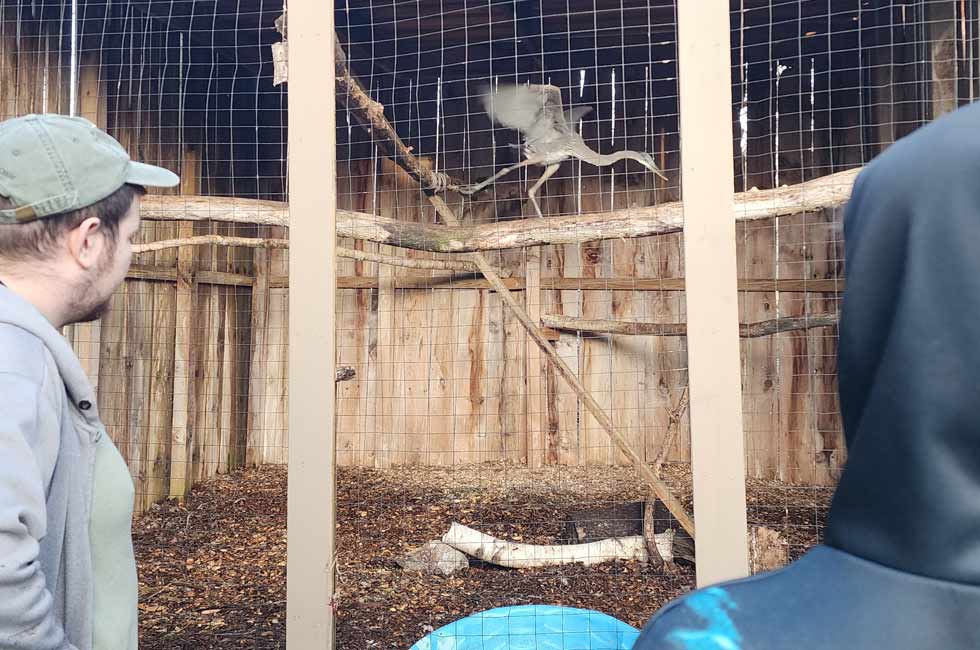
After carefully placing fresh food in the enclosure, student Alex and Leir Intern Sean Powers monitor the Great Blue heron’s behavior.
Such an appreciation of the natural world also provides insights into how best to design enclosures and feed wildlife in our care. The staff engages students in animal care tasks, especially with enrichment. Students help clean enclosures and feed the animals. And in dialogues and through activities, students explore the hows, whys, and what-ifs. While monitoring their own energy levels and practicing self-regulation skills, students are also using critical thinking to determine how they may enhance the care of wildlife.
The Henry J. and Erna D. Leir Global Internship program at Green Chimneys offers six nature-based foci, one of which is wildlife. Over the course of the last several months, Leir interns have been employing clicker training in select care routines. With the help of volunteer Carrie, staff are now able to invite the porcupine into a carrier with the help of a clicker and target. This will prove helpful should the porcupine ever need to go to a veterinarian’s office.
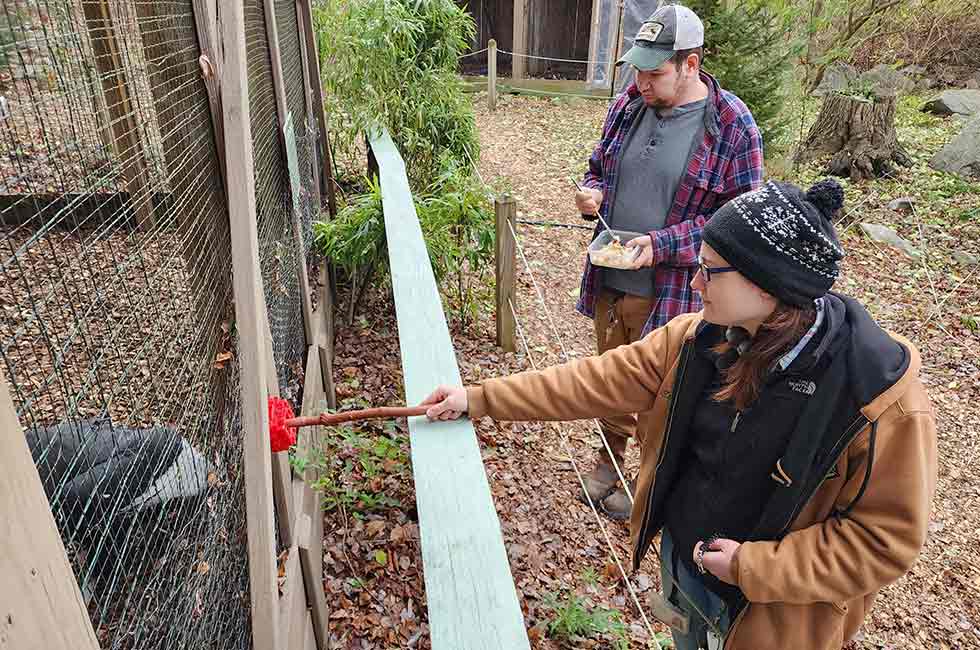
Leir Interns Eliza Fisher (foreground) and Sean Powers are utilizing clicker training to engage the Andean condor.
Similarly, Leir interns have been coordinating enrichment and clicker training with the Andean condor. Interns Eliza Fisher and Sean Powers positively reinforce behaviors while training the condor to go to his enclosure door when prompted with the clicking sound and when seeing the red target stick. When he follows the stick as prompted, the condor receives a treat. With consistency and practice, everyone is learning and winning.
This is Eliza’s second fall as a Leir intern in the Wildlife Center, and she credits the skills gained at Green Chimneys. “Interning here has expanded my animal care experience—working with the porcupine and condor especially,” explains Eliza. “I’m getting great feedback here and outside of the organization, too.” This spring Eliza will begin a zoology program at Brandywine Zoo in Delaware.
Sean first came to Green Chimneys as a volunteer and helped care for the llamas, alpacas, goats, sheep, and chickens in the Teaching Barn. Eventually, he began volunteering at the Wildlife Center. In time, Sean decided to apply for the wildlife internship through the Leir Global Internship program.
“The internship at Green Chimneys has helped me take the next steps in my career,” explains Sean Powers. Since then, he has benefited from the additional training and mentoring that the Leir Internship program provides. Upon completing his internship this month, Sean will expand his skill set once again at Green Chimneys as a per diem animal caretaker in the Horse Barn.
You can help offset the expenses associated with caring for all of the animals at Green Chimneys. You can also ensure the strength of animal-assisted services for Green Chimneys School students. As part of our Year-End Campaign, Newman’s Own Foundation and The Englestad Foundation are matching every dollar donated to Green Chimneys for the month of December. That means your tax-deductible gift will double. And the support for Green Chimneys children and animals will double, too.
